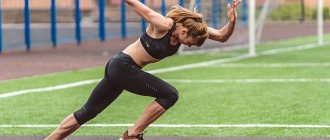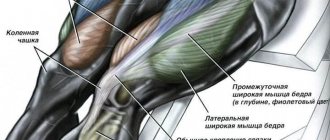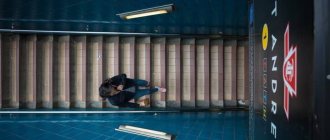Want some serious punching speed? If you've already read How to Hit Faster, then you're ready to do exercises that will increase your hand speed!
Speed kills, everyone knows it. Many great fighters have it: Muhammad Ali, Thomas Hearns, Ray Leonard, Mike Tyson, Roy Jones, Floyd Mayweather, Manny Pacquiao, I could go on and on.
Being able to hit your opponent with a punch before he can hit you with yours is perhaps one of the greatest advantages in boxing. The difference of a split second can make the difference between raising your hand in victory and lifting yourself off the canvas. Even if you were not born with speed, you still need it. Even if it's not part of your style, you still need to develop it. And I ask you to include these important exercises in your regular program, because everyone knows: SPEED KILLS!
I know the goal is speed, but don't rush yourself with these exercises. The most important factor in achieving maximum strength is relaxation. Relaxation is first of all a state of mind, which then becomes a material reality. Keep your mind clear and don't focus on one thing too much. Relax! Relax! Relax!
Instead of complementing speed with strength and precision, focus on balance and coordination. A lot of beginners try to put both power and speed together at first, but this only slows them down and forces them to load up for punches. Don't load up on your punches or try to focus on hitting the target. Instead, give your arms free rein, just try to keep your balance underneath you and your movements coordinated with the speed of your arms.
Sharp and Relaxed Breathing = Sharp and Relaxed Movement
Shadow Fighting (Pure Speed Training)
Shadowboxing is everything! The more time I spend in this wonderful sport of boxing, the more I realize that sometimes shadowboxing is all you need. This simple practice allows you to master each technique without wearing out your joints or straining your body. This underrated exercise can help you develop almost everything in boxing: footwork, balance, strength, technique, and of course in our case, SPEED!
Shadow boxing is perhaps the purest form of speed training. There are no bags to stop your blows, no gloves that press your hands down with their weight. You punch the air with just the weight of your arms. Without anything slowing you down, this is the fastest speed you can move your arms. You can hit as fast as you can imagine your combinations. Shadowboxing can develop your mental speed, your punching speed, and your hand return speed.
Shadow Boxing Exercises:
Start moving around the ring and relax your whole body. Don't worry about squeezing your hands completely. Strike correctly, but not in a way that makes your shoulders tense and tired. You need your whole body to be relaxed when you do speed shadow boxing!
Here are the beat numbers I use:
1 = left jab 2 = right straight / right cross 3 = left hook 4 = right hook / right overhand 5 = left uppercut 6 = right uppercut *vice versa if you are southpaw
Ok, HERE THEY ARE! Follow them and combine!
Basic jab
Double jab
Lined jab
Jab, Right Cross
Left Hook
Left-Right-Left-Right!
| Skillful Combinations
Uppercuts
Long Combinations (focus on sharp, fast breathing!)
|
Work 3 rounds. Exhale with every stroke and with every movement. Don't worry about doing all the combinations in the list above. Stick to your favorites and then try one or two new ones each time. You should NOT be tired. If you're tired, you're too stressed. Relax your shoulders even more and maybe even slow down a little. If you're running out of steam throwing punches in the air, imagine what it would be like in the ring.
When you step during combinations, take VERY SMALL steps. You only need to take 2-3 centimeter steps, so your legs can move as quickly as your arms. If you take large steps, your feet may still be in the air, leaving your kicks without any support on your feet and without power.
Don't worry about strength! Some sequences with double backhands or double forehands will feel weak. Once again, you are only working on speed, not strength. Just let your hands fly and add a little rhythm. Take a few breaks from time to time between combinations and then get back up to speed.
One last note, watch Manny Pacquiao shadowbox in the video below. What he does is a perfect example of high-speed shadowboxing. Sharp breathing, very small steps, focus on quick strikes. He doesn't focus on single hits, he focuses on entire combinations. And for the 923084723rd time, RELAX!
https://youtu.be/HbRisj3Xht4
Quick Strikes on the Bag (Speed Endurance)
Fast strikes are not always speed. Sometimes it's endurance. Moving weight faster always takes more energy. So it's quite difficult to throw fast punches or even practice fast punches if you don't have the stamina for it.
Throwing a bunch of fast punches can wear anyone out. You don't realize it at first, but as you get tired, your slower opponent suddenly becomes faster than you. An even greater danger from fatigue is that your punches become too slow to hit your opponent. So let's work on your speed endurance so you can throw quick punches throughout the fight—not just the first round.
Exercise Impacts At Intervals:
Find yourself a partner and stand with him on opposite sides of the bag. One boxer holds the bag motionless while the second punches the bag without stopping for 15-20 seconds. Then you change. Do this until the 3-minute round is over and then take a minute break. 2-3 rounds of this exercise is a great way to finish off your bag training.
Some Thoughts About This Quick Strike Drill:
- Don't waste time bothering someone to count down 15-20 seconds for you. Instead, just count in your head or out loud while you throw your punches. When you're done, just stop and your partner will instinctively know to start throwing punches.
- You can perform various variations on the bag. In the first interval, throw regular punches, aiming high (palm down, aim for a point on the bag 15-20 cm above your head). In the second interval, throw vertical punches, aiming at shoulder height on the bag. By "vertical strikes" I mean strikes where the palm faces to the side, like a "stationary fist." In the third interval, throw SMALL short uppercuts to the bag at body level. Continue repeating until the end of the round.
Interval punching exercises develop endurance in your arms and shoulders. Which is VERY important in the later rounds of a fight or sparring. It doesn't matter if your whole body doesn't get tired...
When your arms and shoulders become too tired, your punches become too slow to hit your opponent.
Sure, you can still have your power in the later rounds, but if you don't have speed, that power won't matter! So work to make sure you increase your arm and shoulder endurance. In case you haven't noticed, this fast-punching exercise is a boxing rendition of Tabata exercises (in case you want to know more about the theory behind this training method).
A very important reminder, don't get too proud and try to hit the bag at that pace for the entire 3 minutes. Rest pauses allow your arms to regain energy to hit at maximum speed. You should always train at your true top speed (working at 100% when you are exhausted is not “true top speed”). Think about it, sprinters don't train for speed by running 2 miles at a time. Instead, they run short sprints, take a break, and repeat (aka Interval Sprints). The pauses allow their legs to regain energy to run at full speed again. This way, you spend more of your time training at full speed, rather than at half speed, which is what happens when overly ambitious beginners work out for 30 minutes without a break!
Another point about not skipping breaks is that your workout can be better when you constantly have to stop and start again. Throwing punches without stopping is easy when you are already on the move. But stopping and starting again, like in a real fight, is much more difficult when you have to keep running your rhythm. So please don't skip breaks. 15-20 seconds for each, then change!
How to increase the speed of strikes: a non-standard approach and excellent results.
Good day, Soldiers! The next article of our project will answer a question that sounds something like: “How to increase the impact speed”? That is, we will try to describe the corresponding training, the exercises of which allow you to solve this issue very, very effectively.
The exercises below are typical of secret clan combat systems and are practically unknown in our time. The reason that “old exercises instead of new ones” are described here is that they are much more effective than modern ones. As a result, the fighter will be able to raise his speed capabilities to a very high level.
[ad#1]
At one time, having an interest in modern methods of increasing the speed of strikes, I looked at a sufficient number of sites and blogs. What immediately caught my eye was the uniformity, limitedness and lack of creativity of the exercises that migrate from site to site. But what was really in abundance was various medical terms, formulas and other crap that didn’t help a person one iota closer to the desired goal, that is, actually helping a fighter increase the speed of his strikes.
Article navigation:1. Why is it speed? 2. Training. — Adaptation of muscles and ligaments with a special massage. —Exercise “Speed load on all muscle groups.” —Exercise “Movements like in water.” —Exercise “Catch a fly.” —Exercise “Have time to intercept.” —Exercise “Blink Strike.” —Exercise “Have time to defend yourself.” —Exercise “Hurry up to pick up.” 3. Results of speed training. 4. A little about the speed trigger. 5. Articles are a short summary.
From my point of view, a person is burdened with an abundance of “leftist words” solely for the reason that they cannot offer anything concrete in return. This is especially noticeable in books on the Kadochnikov System: you open a section devoted, for example, to the issue of psychological preparation and you literally begin to “drown”: terms, some theories, formulas, etc., etc.... How many times have I tried to “wade through” all this, but the brain simply “blurred” and began to fall wildly into sleep.
If this continues in the future, then such a method of presenting material will finally discredit the system, since the “degree of trust” in the IC has long been “sweeping down like a rapid jack.”
1. Why is it speed?
In short, “The higher the speed, the more technical actions will be carried out per unit of time, the less chance the enemy has.” The increased speed of striking, accuracy and endurance, coupled with adherence to the principle of “free touch distance”, will give a completely new quality to absolutely any attacks, since the enemy will not have time to react at all. In essence, these four components are an almost universal formula for self-defense without weapons!
There really will be no equal! After all, having learned to work at speed while observing the principle of “free touch distance,” you can easily block, dodge or avoid any attacks delivered from a greater distance. After all, the enemy will need to take at least a small step in your direction. The combat path lengthens, and accordingly, the effectiveness of the attack decreases: both in terms of speed and surprise.
2. Training.
Below are seven highly effective exercises. You can sweat over the first four alone, even until you lose your pulse. The fifth, sixth and seventh are practiced exclusively with a partner. I know that for many, finding an intelligent partner is a very difficult task, but the issue must be resolved in a positive way, because only in this case will progress take leaps and bounds.
But at the beginning, before the exercises, descriptions will be given of the location of the zones, the massage of which, although the speed of impacts does not increase, prepares the muscles and ligaments for this kind of work, significantly reducing the risk of injury.
Adaptation of muscles and ligaments to speed with a special massage.
Before we start talking about increasing the speed of any strokes, I will describe a preliminary massage that must be practiced in the first few months of training before you master the skill of high-speed movement “as such.”
Its task is to prepare muscles and ligaments for upcoming high-speed loads. And you need to practice it every day quite often: up to ten times. Of course, each such micro-training is not very long: so... about a minute or two. The main thing is, “it was a mistake,” as they say, but always with internal concentration on the essence of the exercise. Such concentration in the future will significantly increase the effectiveness of massage actions, since the appropriate mood is developed
1. Working on the area of the sixth-seventh cervical vertebrae.
Finding this zone is very simple: if you tilt your head forward, the most protruding vertebra will appear on your neck. Below it, at a distance of approximately the width of the palm, stimulating work is carried out, which perfectly prepares the tendons and muscles of the body for future speed and strength work. The massage is performed with rather harsh rubbing movements of the palm interspersed with small taps with the fist, however, carried out within the limits of comfort.
2. Working on the area under the navel.
The impact is carried out with fingers, slightly bent and folded so that their tips form, as it were, one line: that is, they do not stick out relative to each other. These unique platforms, formed by the fingertips, are used to tonize by providing a slight vibrating effect on the zones and points below the navel immediately behind the navel and at a distance of up to three cuns on both sides of the body. As you do these pressures, feel a kind of muscle belt encircling the body.
3. Working on the leg areas.
The areas that should be worked on are those starting immediately behind the knee joints: above and below them. The movements must be quite powerful and must be performed with appropriate fist shapes, simultaneously from both sides in antiphase.
In the same way, the zones located at the width of four fingers from the lower protruding bones of the ankle are being worked on, outside and inside.
4. Working on hand zones.
First of all, mention should be made here of such a method of increasing the speed of strikes as transverse strapping of the palms. The palms are tied in the middle and by periodically clenching them into fists, the person achieves stimulation of the zone, which is located on the side of the edge of the palm in the depression when the little finger is bent.
Massage actions are also carried out on the wrist joints, interspersed with their strong compression: as a result, the bones should seem to come out a little from the joint capsules.
5. Working on the elbow areas.
Working on painful areas located above the elbow areas from the outside and inside, approximately in the same way as was done when massaging the knee areas, as already described above. These zones are detected when the forearm is bent at ninety degrees, with the palm facing up. With the other hand we clasp the elbow joint a little higher and look for two rather painful areas and then work on them.
Next comes the actual exercises.
1. Exercise “Speed load on all muscle groups.”
This is the first exercise in the series “how to increase the speed of your strike.” Its essence is to “increasingly” make any movements that you can think of. You learn to move at speed “in general,” and not just along a specific trajectory. The breathing is as follows: you first forcefully breathe until a weak feeling of oversaturation of the body with air arises, and then, with a gradually increasing speed, you begin to move - at the same breathing rhythm.
There are no restrictions on movement, but you should remember about the tendon-muscular system. Remember in the same way as there is a high probability of losing your heart. Therefore, the exercise should not be forced: after all, in order for it to be considered completed, you must be able to move at the maximum possible speed for about fifty minutes, and this often takes several years.
How is speed work usually performed in different sections? A person first studies some kind of combat movement, and then begins to hone it for speed. But the main “jamb” of this method is that it develops a certain trajectory, but what is “on the sides” remains untouched.
You cannot truly increase the speed of your strikes by practicing only some individual actions. It is necessary to work with all the movements that the human body can make, and it remains to be seen what movement may be required in combat.
In the exercise described, almost all muscle groups of the body are worked out, which, by the way, is very important in a “street” situation, where there is no conditioning, but very often “accidents” to which you are looking for the corresponding “key”.
Five undeniable advantages of the exercise:
Specific endurance for combat is formed. It will be enough to learn to move at speed for at least five minutes and there will be no competitors in the fight. No running can replace this type of training.
The speed itself will be several times higher than that of the enemy. You will be faster than boxers and this is not an exaggeration!
The exercise removes the well-known feeling of “hitting hard”: the limb seems to be filled with cement and does not obey volitional orders.
You can start building speed now, rather than waiting until you’ve mastered a certain shot. After all, speed is developed on the basis of already existing natural human movements.
People who are far from martial arts can train for speed in this way. Just don’t rush: health comes first!
2. Exercise “Movements like in water.”
This exercise also perfectly increases speed: not only of strikes, but also of movements in general. This type of training has already been described in detail in this article, as well as in the “Lessons”. Only in the article was it presented in the form of an intuitive qigong complex for beginners, but this should not be confusing, since many exercises are multi-sense and give the desired effect, depending on what the performer is focused on. During training, if he listens to his own feelings, sensitivity, perception, and energy will develop. He will begin to concentrate on the work of the muscles, various aspects of the work of the tendon-muscular system and other wisdom - and now he is already working on the movements themselves, developing their smoothness, continuity, and the ability to switch from one movement to another.
By practicing this exercise for quite a long time, you can work out absolutely all body movements very efficiently and, most unexpectedly, significantly increase their speed.
However, the surprise here is only at first glance. After all, when you work on movements, you polish their trajectory. A trajectory is a set of micro-movements, or rather, their absence, since the main movement has not yet been staged. By training, you develop these same micro-movements, as a result of which the movement proceeds in a well-established manner, which means its speed increases.
It is very easy to check the movement for micro-movements. To do this, it is enough to make any movement at a very slow speed. If you notice that when performing a movement, it moves as if with small jerks, swaying from side to side and other, not entirely incomprehensible “effects”, then this means only one thing: the movement is “raw” and the body does not listen to the brain, constantly trying "turn to the side." Hence, it still requires elaboration, including at slow speed.
3. Exercise “catch a fly.”
Just don’t laugh) It’s funny, of course, chasing insects, but if this activity will help increase the speed of strikes, then why not? In addition, having mastered the exercise, you can easily intercept whatever you want: a falling leaf of a tree, some piece of paper, as well as enemy attacks. In addition, many technical nuances are realized, for example, the need to “hunt” in a lower position, otherwise there will be no reserve for movement.
When you learn to catch an insect, the exercise can be significantly complicated by setting yourself the task of hunting with certain combinations of fingers. Such training simply perfectly develops fine motor skills of the fingers, forcing the necessary muscle fibers to work, which is very important for activating the sensory parts of the cerebral cortex.
4. Exercise “Have time to intercept.”
Training worthy of Bruce Lee! The essence of the exercise is to hold an object, release it, carry out an attacking lunge and manage to intercept the falling object before it hits the ground! The attacking lunge is carried out with the hand that holds the object.
This exercise can be mastered in stages, starting with holding a light object, because it is much easier to intercept it in the reverse movement: in fact, a brick will fall faster than a fountain pen... And a fountain pen is faster than a piece of paper... And a piece of paper is faster than a feather... Starting with a feather and By slowly increasing the weight of the object being held, you can increase the speed of your own attacks for many years due to the fact that the requirements are becoming more stringent all the time.
This type of exercise is good because it is impossible to “slide” or work “carelessly”: either you managed to intercept the object and it did not fall, or you did not have time and it crashed to the surface.
5. Exercise “blink strike”.
An excellent exercise that helps build literally super speed. Its meaning is to have time to touch your partner at the moment when he blinked. Your partner blinked - you touched him. You need to learn to fit in that short period of time while your partner’s eyes are closed.
It seems to be a game, but the combat meaning is obvious: when a person blinks, at that moment he, therefore, does not see: after all, his eyes are closed. It is during this short period of time that a blow is delivered, for example, a cutting movement of fingers across the eyes. Or a lunge in the throat. The benefits of the exercise are undeniable. After all, you ensure that your blow will be invisible to the enemy. And in fact: how can you notice it if your eyes are closed for a brief moment of blinking? And in order to complete the strike, you simply need to fantastically increase your speed capabilities. Another advantage of the exercise is that a person blinks almost unconsciously and, let’s say, chaotically, which will add an element of naturalness to your training.
At the same time, the skill of carrying out a blink attack will also be developed: the person blinked - you managed to strike at that time. Of course, in order not to bring down everyone, an appropriate attitude is needed, where is peaceful life and where is the combat situation.
6. Exercise “Have time to defend yourself.”
As I already said, if the principle of “free touch distance” is observed, the person being attacked will not be able to defend himself “in principle.” We will use this effect to significantly increase the speed of our strikes.
True, there is a small nuance here. When you develop protection from such a distance, the partner conducting the touch strikes needs to stand at a distance slightly greater than his “reaching” distance. Ideally, he should be at such a distance that you can defend against about half of his attacks at full speed. After all, if your partner works from the “reaching” distance, then you will not have time to defend yourself from a single blow, and then what is the point of the exercise? What’s the point if you miss “touch attacks” over and over again, batting your eyes every time and swearing terribly?
Of the main points, the following should be noted. You will have time to defend yourself from attacks only if you abandon the standard arsenal of defenses and begin to act with the movements that your body will generate as it tries to avoid pain. Pain is the second point and it is necessary, otherwise the body will not activate its protective potential inherent in it by nature. And we remember that there is no need to hit as hard as you can - spontaneous defense can be activated simply by scorching slaps on the skin.
7. Exercise “Have time to pick it up.”
Another interesting exercise from the series “how to increase the speed of a strike” and, unlike those described above, it is quite often mentioned in sources devoted to martial arts and hand-to-hand combat. Your task will be to have time to take something from your partner’s palm before he clenches it into a fist. Accordingly, the palm does not have to be placed at the same level all the time (usually this is the level of the belt), but it can be at the level of the head, shoulders, etc.
3. Results of speed training.
This magnificent seven exercises will allow an interested person to increase the speed of his own strikes, raise his speed level to a level that will be perceived by many as incredible. Moreover, the more you progress in the art of expanding your speed capabilities, the more interesting discoveries will be made. For example, when fighting a duel, you will simply be amazed at how much the enemy’s movements resemble the movements of a sleepy fly. But to achieve this effect, training and practice are necessary. And subsequently it will be impossible to relax, because there is no speed limit.
In addition, knowledgeable people say that over time, when speed capabilities exceed a certain level, a person will begin to perceive the world around him somewhat differently. Whether this is true or not, we’ll see, but the fact that working at speed already expands the range of perception of the world around us is a fact. There was a time when I didn’t train and, accordingly, my speed dropped sharply. So, the impression “in life” was that I was shackled, literally “a man in a case.” Of course, people simply don’t notice this, because they live with this feeling all their lives, but as someone who is familiar with other conditions, this “psychophysical tightness didn’t hit me at all.”
4. "Trigger for speed."
Finally, the time has come to touch on one nuance regarding increasing the speed of strikes. A skill where the body is trained for speed and can move quickly is not enough. It is also necessary to develop a “trigger” for the speed itself.
What it is? I’ll explain with the example of a car. Everyone knows that in addition to such a characteristic as the maximum possible speed, a car also has another indicator. This is the time that the car needs to spend to reach the same speed declared by the manufacturer.
As if there was already an article on this topic. Absolutely the same thing applies to humans. In addition to the speed itself, a person needs to learn how to “gain it” as quickly as possible. That is, you need to learn how to quickly switch to combat speed from a “cold” state.
How to learn this trick? One possible solution is controlled emotion. As an example, here we can cite boxers sparring. So, if one of them misses a small blow to his own pug, then he, accordingly, has some kind of emotional outburst, due to which the necessary activating substances are released into the blood. This leads to the fact that he will reach the required speed faster than his opponent, who has not yet “grabbed it”.
In a real fight, it is highly not recommended to miss the enemy’s blows, and therefore it is necessary to learn other methods. One of these methods is the ability to swing the “emotional pendulum.” In everyday life, the skill of emotional development is even more valuable than in battle, since a fight is a rather rare phenomenon. And in life, the skill can be used in many cases, for example, to quickly wake up or relieve drowsiness.
There is no particular point in going into the details of such a buildup for two reasons, because: a) To begin with, it would be good to understand the above information. b) Some nuances of such work have already been described in week twelve.
5. Articles a short summary: 1. The given list of seven exercises taken from the arsenal of ancient clan combat systems plus a small massage complex borrowed from there will allow a hand-to-hand fanatic to raise his speed characteristics to a level unattainable for others.
2. The ability to fit an attack within the speed limits of the enemy’s blink will allow you to carry out attacks with wild speed. Trained combat endurance allows you to maintain a high-speed pace for a very long time. Taken together and taking into account the principle of “free touch distance”, the fighter’s personal motor sphere will expand significantly, which will lead to the ability to carry out lethal attacks from a slightly greater distance with the same effect: as a result, it will be impossible to defend against them!
3. An unexpected bonus will be the effect when any enemy movements begin to be perceived as if they were a snail's.
4. But all this is subject to real training. But real speed training is accompanied by microtraumas and strains of muscles and tendons (the above massage will help here), as well as liters of sweat, which is also unpleasant. In addition, there is a phenomenon of mental nature: a person treats speed exercises as very hard work. That is, he simply does not like “speed”, it is unpleasant for him. From my point of view, this is the body’s subconscious defense against the upcoming exit from the “comfort zone.”
Dear readers of the blog “Master of Battle”! If you would like to subscribe to new articles, you can do so below:
Subscribe.
Forced Speed Training (Pneumatic Bag and Punch Bag Stretch)
An air bag and stretch bag are excellent equipment for developing speed. In addition to improving accuracy, timing, reflexes and coordination, they are also very good for “forced hand speed” exercises. Hitting quickly is quite easy if you only hit when you feel like it. Unfortunately, this never happens in real battles. In real fights, you are always FORCED to throw punches, even when you don't want to. Because you throw these punches out of panic rather than as an act of your own intentions, these "forced punches" wear you down faster. So let's go back to the pneumatic bag and the stretch bag, they force you to hit even when you don't want to. No matter how tired you are, you MUST hit the bag.
The pneumatic bag and the stretching bag also have their own exceptional qualities. The pneumatic bag develops arm endurance and shoulder endurance. The stretch bag helps improve accuracy and timing. This projectile forces you to constantly react quickly and think quickly. Learning how to work a punching bag is an art in itself. I'll save that long explanation for another day. For now, just know that these implements will improve your hand speed. Perform 2-3 rounds on the pneumatic bag and stretch bag.
Developing Boxer Speed
The main task of an experienced coach when preparing a novice boxer is to teach the athlete to overcome the fear of getting hit. A boxer's speed and readiness to strike are the basic components of any fighting technique. The unconditioned reflex “close your eyes and pull back” while receiving a blow is inherent in every person, but a boxer must promptly see the upcoming danger, internally prepare for it and mentally find an opportunity to repel it or accept it with the least damage to himself. To practice a punch, it is recommended to work with a coach or a partner who will make light blows to the boxer’s head area and respond to them. You need to work on your reaction speed and strike reception from the first training sessions, otherwise you can acquire the wrong defense technique, which will then be very difficult to change.
Mainly, the athlete needs to accustom himself, at the moment of receiving a blow, not to jerk back and close his eyes, but, on the contrary, to quickly and correctly process the opponent’s blow and respond to it to his advantage. These skills don't come out of nowhere, they need to be practiced hard. To develop the speed of striking an opponent and dodging an opponent’s blows in training, boxers use a unique fight ball simulator. You can find out more detailed information about this simulator by clicking on the link to buy a fight ball.
Resistance Training for Speed Muscle Development
Push-ups (Explosive Speed)
Push-ups, when performed with speed-oriented technique, can help you add speed to your punches. Since everyone's hands are different, you need to find the perfect fit for where to place your hands and how low to go. Focus on speed, not strength. You need to finish this set FAST!
TRICEPS PUSH-UPS
- Because of my long arms and thin frame, I prefer to do push-ups where I only go down a third. This means that I only work the triceps in this “stretch” phase of the push-up. I do about 10 short sets with only 10-15 reps each. Once again, I only work at the top of the pushup to maximize fast speed and try to explode with each pushup. Focus on going down fast and going up fast (most people go down slow, go up fast). When you pause, pause at the top of the push-up, not the bottom.
PUSH-UPS WITH MEDICINE BALL
- Lower yourself into a push-up position, but place one hand on the medicine ball. Once you do a push-up, quickly move your body to the other side of the ball, resting your other hand on the ball. Do push-ups as fast as you can. 3 sets of 15 times. Another variation you can do is to take 2 medicine balls and place them at a distance wider than your shoulder width. Keep one hand on the ball and the other hand on the floor between the balls. Once you do a push-up, you move your body to the side, so both arms are constantly moving to the side and to the center. (If you need a more detailed explanation of this exercise, leave a comment). Again, 3 sets of 15 reps.
COTTON PUSH-UPS
- Another type of pleometric style pushup that I like is the clap pushup. You can do 3 sets of 10-15 push-ups with clap. What is important is to spend a minimum of time in the bottom push-up position. You don't necessarily have to fly high, but just make sure you don't spend too much time with your arms bent at the bottom of the push-up.
Resistance Training for Speed
Harnesses
You can also develop fast punching speed through harnesses and isometric training. The harnesses apply constant force as you throw punches. This constant resistance allows you to develop speed and explosiveness throughout the movement. Regular weight training cannot do this because the weight is only heavy at the beginning. Once you push the weight out, your momentum makes it easier when you throw your arm out. Swimming can be a very good aid to resistance training because the water is constantly working against you.
Isometric Workouts
Isometric training is a type of training in which you apply force, but your body does not move at all. But how can you apply force without moving?! You can do isometric arm training by walking up to a wall and getting into a punching position where you could theoretically punch the wall. Now push off the wall for 10-15 seconds, 3 sets at a time. You can stand at different angles that simulate different punches and target different muscles (chest, shoulders, triceps).
The theory behind isometric speed training is that you train your arms as if they were rubber bands. You train your arm muscles to store energy so that as soon as the hold ends... SNAP—your arm flies out like a charged rubber band.
Several effective exercises to develop strength
With barbell:
- In a sitting position, take the barbell with both hands, lift it above your head and bend your elbows, bringing the barbell behind your head. Smoothly straighten your elbows. Repeat 8 - 10 times in 3 approaches.
- In a lying position, take the barbell with both hands and place it behind your head. Bend your elbows, then straighten them. Do this for 8-10 repetitions, 3 approaches.
- Extension of the arms at the wrists with a barbell in a sitting position. You need to sit on a bench and place your forearm on the bench or knees. Take the barbell with an overhand grip and lift both hands up and then lower it down.
- Many sports and gyms have a special simulator for developing the muscles of the forearm - these are handles to which a cable with weights on rollers is attached. This machine can work on both flexion and extension of the forearm.
Pull-ups on the horizontal bar are an effective exercise for increasing the speed and power of a blow. When performing pull-ups with a direct grip, you work the muscles of the forearm, shoulders, triceps, biceps, and back muscles. They all help speed up the speed of your punches.
It is important to try to speed up when performing any task - be it running, practicing combinations on a bag, working in pairs or jumping rope. Acceleration should be viewed as an explosion. The ability to “explode” at any moment will help change the outcome of the fight in the last rounds or seconds of the fight. The possibility of suddenly slowing down the pace of the battle will put the opponent into brief confusion, this will be enough for a decisive, accentuated blow. Such a blow will be unexpected and unnoticeable. Knockouts most often happen this way.
Boxing fascinates with its unpredictability. A fight only looks good when its outcome is unknown in advance.
Return Muscles
The speed of the arm's return is something that MANY boxers miss in speed training. Everyone loves to work the striking muscles, such as the chest and triceps, but rarely does anyone work the return muscles, such as the back, lats, and hamstrings. What many boxers don't realize is that the return phase is half the movement of a punch, so being able to get your hands back faster allows you to punch again much faster!
I've also noticed that many beginners do nothing more than work on the bag in training. The bag is a strong object, meaning if you hit the bag, it will always spring your arm back, which does not train your return muscles. Sure, you can easily work the bag for 10 rounds, but what happens when you spar? After you miss just a few punches in the ring, your arms will be completely tired and you won't know why. That's because you're not used to missing and you're not used to punching through the air, and your return muscles (back, back of the shoulders, and lats) aren't developed to bring your arm back quickly enough.
The best exercises to strengthen the reflex muscles of the arm:
A fight with a shadow
- You're constantly throwing punches through the air while shadowboxing, which forces you to use your muscles to bring your arms back. Try shadowboxing at 100% speed with gloves and you will understand how weak your recovery muscles are. You don't need to add weight or do anything else. Even regular shadow boxing will help you balance your back core muscles with your front core muscles.
Pull-ups
- Pull-ups are a great exercise for the back and lats. Do 3 sets of 6, 8 or 12 reps. Whatever you can't do, just do it. Now your upper body will no longer look so hunched over.
Stretching Exercises
- I'm too lazy to list all the names of the exercises. Any exercise that simulates the motion of throwing your arm out should do the trick. I have TRX Suspension bands at my gym and they work great for this, but lowering the rope or stretching stretch ropes will also work.
Stretching
Loose, relaxed muscles have the potential to move faster. Don't fight with pain in your shoulders or body. Make sure you do good stretches and spend significant time warming up your muscles. Even on days when you don't train, try to stretch. Many of the fastest fighters I have met are often the most flexible people I know. (I wrote an article about the importance of flexibility in boxing .) FYI, you should stretch for a MINIMUM of 30-45 minutes before each workout and then another 10-20 minutes at the end of each workout. Professional boxers, and perhaps elite athletes, usually do this at double the rate.
Final Thoughts About Hand Speed Exercises
Speed starts from the head and ONLY THEN in the body...
If you can't think fast, you'll never be able to move fast.
...be that as it may, your body can't box on autopilot. Relax your mind, concentrate and stay focused, but be aware of everything that is happening around you. Don't focus on every single shot. Try to focus on the whole combination or the whole bunch. Each combination of strikes has its own purpose, whether it is to get in close, or to land a hook to the body, or simply to force the opponent to defend himself, to create space for himself to escape.
Oh, and one more thing. Don't try to do every exercise above on one day or every training day. Use several variations and focus on one thing a day rather than everything every day.
The meaning of dynamics
Due to his speed, the boxer is ready for attacks. He reacts promptly to the upcoming threat. He can mentally prepare for it and find solutions to effectively deal with it.
It is optimal to perfect strikes in tandems. The coach or partner attacks the head with light blows. They need to be reflected and responded with your own attack.
It is necessary to develop quick reaction and execution of a strike from the initial lessons. The fighter must teach himself, when parrying a blow, not to rush back and keep his eyes open. You need to competently and quickly handle your opponent’s attack and respond to it with maximum benefit for yourself.
It is useful to use a special ball - “fight ball”











